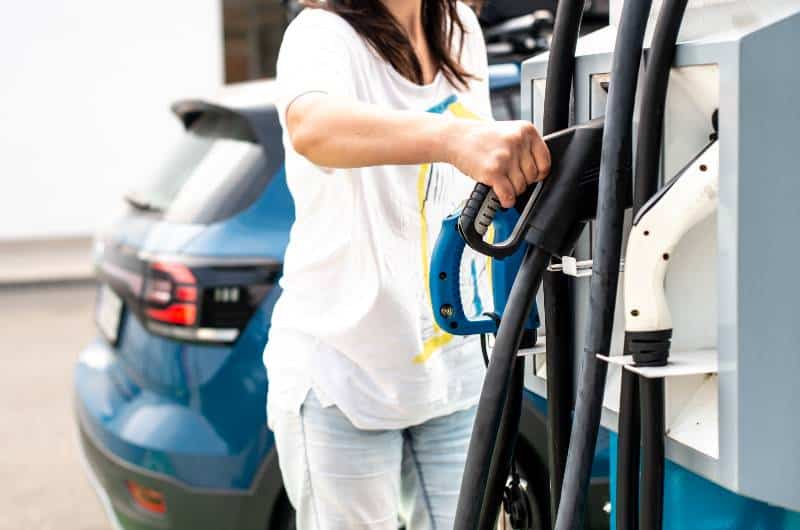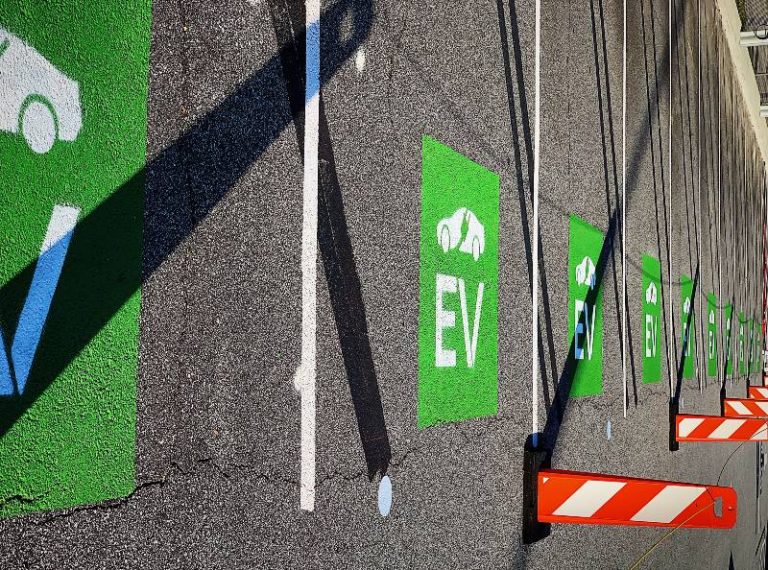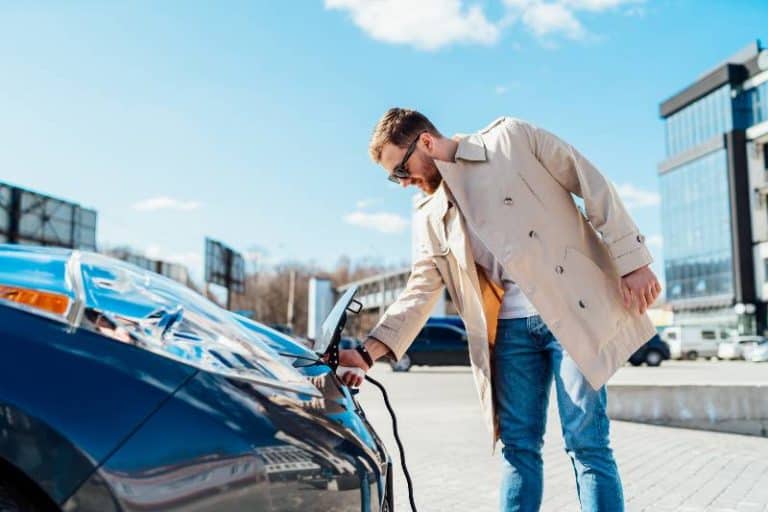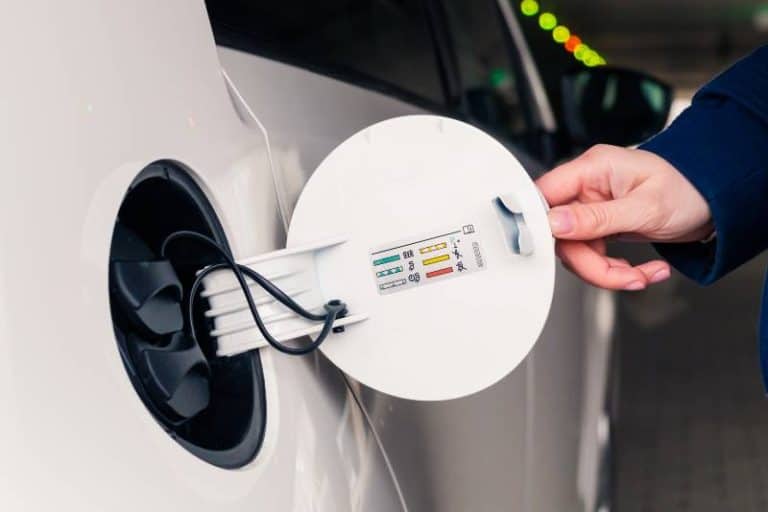Keeping Up with the Charge: The Power Grid & EVs
As more and more electric cars hit the road, they are making a significant impact on how energy is managed and distributed through the power grid. This new wave of transportation has become an important source of renewable energy, not just for individuals but also for businesses, local communities, and our planet’s environment.
In this blog post, we will explore what it means to have electric cars running on the electricity grid–impactful changes that are being felt now as well as possible implications in the years ahead. We’ll look at how advances in battery technology have made charging easier and improved our climate goals. Finally, we’ll detail current & future ways the government could address some of the challenges that arise when mass adoption takes place.
The energy sector is undergoing a significant transition towards renewable sources for a greener future. While traditional energy production is more reliable, renewable energy can be unpredictable. The increase in electric vehicles has raised concerns about the electrical grid’s ability to handle the load. However, EVs can actually serve as mobile batteries, and therefore, they are not a threat but rather an asset to the grid.
Key Takeaways
- The surge in electric vehicle (EV) adoption introduces a significant new load on the power grid. If not managed effectively, this increased demand could lead to stability issues during peak times and require substantial infrastructure upgrades.
- Demand response strategies, such as time-of-use pricing and smart charging, are essential tools for managing the load effect of EV charging
- The future of grid integration of EVs presents an opportunity for the expanded use of renewable energy sources and advanced energy storage technologies
Understanding Electric Vehicles and the Power Grid
The basic working of EVs
Electric vehicles (EVs) operate differently than gas-powered vehicles. They use an electric motor and rechargeable battery pack to move on roads without burning gasoline or producing harmful exhaust emissions. Additionally, they generate less noise pollution.
Electric cars work by receiving energy from a charging station, storing it in a battery, and using that stored energy to power the motor which moves the wheels. Behind the scenes, various electrical components work together to make this process happen.
Explanation of the power grid
The power grid is a system designed to distribute electricity to consumers, consisting of generator stations, transmission lines with towers, and distribution lines for individual consumers.
Step 1: Energy is Generated
The generator produces energy.
Step 2: Energy is Converted to High Voltage
Convert energy into a high voltage for distribution.
Step 3: Distribution and Consumer Use
The power lines transport high-voltage power to areas with people, where transformers reduce the voltage to a usable level for houses. Afterward, the power is sent to customers.
The Impact of EV Charging on the Power Grid
Understanding charging infrastructure
As electric vehicles (EVs) become more prevalent, the demand for electricity to charge them increases. This demand will have significant implications for our power grid, which was designed for different usage patterns. Charging an electric vehicle is a power-hungry process, and if not managed correctly, can place substantial strain on the grid.
Understanding Charging Infrastructure
There are three primary types of charging infrastructure for EVs: Level 1, Level 2, and DC fast charging.
- Level 1 charging is essentially plugging the vehicle into a standard household outlet. This offers about 2-5 miles per hour of charging, depending on the vehicle.
- Level 2 charging requires a 240V circuit (like a clothes dryer) and can provide 10-60 miles per hour of charging. This is the most common type of home and public charging.
- DC fast charging is a high-powered charging option that can recharge an EV’s battery to 80% in about 20-30 minutes. These are typically found along highways or in commercial settings.
The Load Effect of EV Charging
Charging a fleet of EVs can put substantial strain on the grid. Unmanaged, the load effect can be likened to adding a few houses to the grid for each EV. This impact depends on the penetration level of EVs, the time of charging, and the charging technology used. For instance, if many EV owners charge their vehicles during peak electricity demand periods, this could exacerbate grid load stress, causing stability issues and potentially leading to blackouts.
Peak Demand Implications
Peak demand refers to the highest demand for electricity during the day, typically in the morning when people are getting ready for work and in the evening when they return home. If EV charging is concentrated during these peak periods, the extra load could require additional capacity from power plants and potentially upgrade transmission and distribution infrastructure, leading to substantial costs.
Conversely, if charging can be managed to occur during off-peak times (for example, late at night), it could help to balance the load on the grid, making more efficient use of existing capacity. This could be facilitated through time-of-use electricity rates, smart chargers, or vehicle-to-grid technologies, which allow for two-way energy flow between the EV and the grid.
The Potential Strain on the Power Grid
As more people shift to electric vehicles (EVs), the increased demand for electricity to charge these vehicles can strain the existing power grid. This strain could be more pronounced during peak demand periods, especially if a significant portion of EV owners plug in their vehicles for charging simultaneously. This could potentially lead to power outages or necessitate costly upgrades to power plants and transmission infrastructure.
The Grid’s Current Capacity
The capacity of the power grid varies by region and depends on various factors, including the number of power plants, their types (e.g., coal, gas, nuclear, renewables), their size and efficiency, and the capacity of transmission and distribution infrastructure. As of my knowledge cutoff in September 2021, most power grids were designed with sufficient capacity to meet existing demand plus a margin for peak periods. However, they might not be equipped to handle a large-scale switch to EVs without upgrades or enhancements.
Forecasting Future Electricity Demand
Forecasting future electricity demand involves considering several factors, including population growth, economic trends, advances in energy-efficient technologies, climate change policies, and shifts in energy use patterns. The increased adoption of EVs is a crucial factor to consider. Various studies have predicted that if the transition to electric vehicles continues at a fast pace, they could significantly increase global electricity demand.
For instance, the International Energy Agency (IEA) in its Global EV Outlook 2021 suggested that the electricity demand from EVs could reach over 2000 TWh by 2030 under its STEPS Scenario (Stated Policies Scenario) and over 3500 TWh under its EV30@30 Scenario (30% of the market share of EVs by 2030). This would represent a substantial increase from the 2020 levels (around 110 TWh).
To accommodate this demand, the power grid will need to become more flexible and resilient. This could involve enhancing renewable energy generation, improving energy storage capabilities, upgrading transmission and distribution infrastructure, and implementing demand response strategies such as time-of-use pricing and smart charging for EVs.
The Benefits of EV Integration
Vehicle-to-grid (V2G) technology
Electric vehicles (EVs) usually stay connected to a power source while parked, either at the owner’s home or in a parking facility. Modern EVs have the ability to exchange information with the charging station, providing details about the battery’s current charge level and rate of charging. In the future, V2G technology could enable secure communication of payment details at public charging stations, as well as extend additional features by establishing a secure connection between the vehicle and the manufacturer.
Aligning V2G hardware with the HomePlug standard facilitates faster data speeds and improves security by enabling the vehicle to connect to the internet over a house’s internal power lines.
The V2G technology enables users to use the electricity from their electric vehicle’s batteries to power their homes during power outages. In addition to this, users can sell electricity back to the power grid during peak load times by harnessing the considerable battery capacity of their EVs. To avoid excessive utilization of the battery, users can set a limit on the amount of power drawn. Moreover, they can customize the settings to purchase electricity when it is cheaper and sell it to the grid at higher rates during peak times.
Demand response strategies
Demand response strategies can help manage the load effect of EV charging on the power grid:
- Time-of-Use Pricing: This involves varying electricity prices throughout the day based on demand. Higher prices during peak periods encourage customers to shift their electricity use to off-peak periods.
- Managed Charging or Smart Charging: This refers to technologies and systems that control when and how quickly EVs are charged. It can involve delaying the start of charging to off-peak periods or gradually charging a vehicle over a longer period.
- Vehicle-to-Grid Technologies: These allow energy stored in an EV’s battery to be returned to the power grid when demand is high or when the vehicle is not in use.
- Incentive Programs: These could include discounts or rebates for customers who allow their EV charging to be managed or shifted to off-peak periods.
By adopting these demand response strategies, we can ensure that the integration of EVs benefits the power grid, rather than strains it. It is a balance between encouraging the adoption of cleaner transport options and ensuring the stability and reliability of our energy infrastructure.
Current Strategies to Mitigate the Impact
Various strategies are being implemented to mitigate the impact of EV charging on the power grid. These strategies primarily focus on managing the increased demand effectively and upgrading the grid to handle the additional load.
Time-of-use pricing
Time-of-use (TOU) pricing is a strategy that changes electricity prices throughout the day based on demand. During peak demand periods, electricity prices are higher, encouraging consumers to shift their electricity use to off-peak periods when prices are lower.
This strategy can be particularly effective for EV charging, which is often flexible in terms of when it occurs. By charging their EVs during off-peak periods, consumers can save money and help balance the load on the grid.
Smart charging
Smart charging, also known as managed charging, is a technology that allows the charging process to be controlled in a way that optimizes charging based on various factors, such as current electricity demand and the grid’s capacity.
With smart charging, the start of charging can be delayed to off-peak periods, or the charging process can be slowed down when the grid is under strain. Some smart charging systems can also respond to signals from the grid operator, reducing or increasing the charging rate based on real-time grid conditions.
Upgrading grid infrastructure
Upgrading grid infrastructure is another critical strategy to mitigate the impact of EV charging. This could involve upgrading transmission and distribution infrastructure to handle the additional load, as well as increasing the grid’s flexibility and resilience.
Investments in energy storage systems, advanced metering infrastructure, and grid automation technologies can also help the grid accommodate the increased demand from EVs. For instance, energy storage can absorb excess electricity during periods of low demand and release it during peak periods, helping to balance the grid.
Future Solutions
As we look to the future, the solutions to accommodate the increased electrical demand from electric vehicles (EVs) will likely center around renewable energy sources and advanced energy storage technologies. These approaches will not only help meet the demand but also move us towards a more sustainable and resilient power grid.
Renewable energy sources
Renewable energy sources such as solar, wind, and hydroelectric power can provide a significant portion of the additional electricity needed for EV charging. As the costs of these technologies continue to decrease, they are becoming an increasingly viable option for meeting increased electricity demand.
Moreover, renewable energy sources can help reduce the carbon footprint of EVs. While EVs produce no tailpipe emissions, the electricity used to charge them often comes from fossil fuels. By increasing the share of renewable energy in the power mix, we can ensure that EVs are truly “zero-emission” vehicles.
One of the challenges with renewable energy is its variability: solar power is only produced during the day, and wind power is dependent on wind conditions. However, this variability can be managed with the help of energy storage technologies and smart grid management strategies.
Energy storage technologies
Energy storage technologies can play a crucial role in managing the increased demand for EV charging. By storing excess electricity during periods of low demand and releasing it during peak periods, energy storage can help balance the grid and ensure a stable supply of electricity.
Batteries are the most common form of energy storage, with lithium-ion batteries being the most widely used type due to their efficiency and decreasing costs. However, other types of energy storage, such as flow batteries, thermal storage, and pumped hydro storage, are also being explored and developed.
In addition, electric vehicles themselves can act as a form of distributed energy storage. With vehicle-to-grid (V2G) technologies, the batteries in EVs can store excess electricity and feed it back to the grid when needed.
The Impact of Electric Cars on the Power Grid FAQs
How can renewable energy sources support the growth of electric cars?
Renewable energy sources such as solar and wind can provide the additional electricity needed for EV charging. Increasing the share of renewable energy in the power mix can help reduce the carbon footprint of EVs, making them truly “zero-emission” vehicles.
Are there potential risks to the power grid due to a rapid increase in EVs?
Yes, the rapid adoption of EVs could result in an increase in electricity demand that may exceed the capacity of existing power grids. This could lead to grid instability or blackouts if not managed appropriately.
What strategies can be employed to mitigate these risks?
What is smart charging and how does it reduce the strain on the power grid?
Smart charging is a technique in which electric vehicles are charged according to the availability of power on the grid. By analyzing electricity demand and supply, smart charging systems can ensure that electric cars are not overcharging or taking too much load at once, thus reducing strain on the power grid.
Will I face power outages if more people start using electric cars?
Not necessarily. Smart grid infrastructure and energy storage technologies can help manage the increased electricity demand from EVs, ensuring a stable supply of power to all users. This will help avoid any potential power outages due to the growth of electric cars.
How is future electricity demand forecasted with the rise of EVs?
Electricity demand forecasting models can help anticipate future electricity demand from EVs. These models take into account factors such as the number of EVs, the type of vehicles, and local weather conditions to estimate energy consumption for different charging scenarios. Forecasting models can also be used to understand how changes in electricity prices affect EV adoption rates and vice versa.
Conclusion
In sum, the proliferation of EVs creates an important near-term challenge for the power grid.
If approached intelligently, this challenge can be addressed using existing strategies like demand response and in the longer term, by transitioning to renewable energy and further advanced energy storage technologies. With these tools in place, an efficient and reliable electric grid infrastructure can emerge to meet growing EV consumer demand.
To provide further information on how to navigate integrating EVs into a modernized power grid infrastructure, join our newsletter!
Here, we offer insights into unlocking advanced tools used to maximize the use of both energy and emissions data as well as provide real-world examples of how demand response is being utilized successfully today. Sign up today and help us shape the future utility grid with cleaner and more efficient distributed energy resources!






